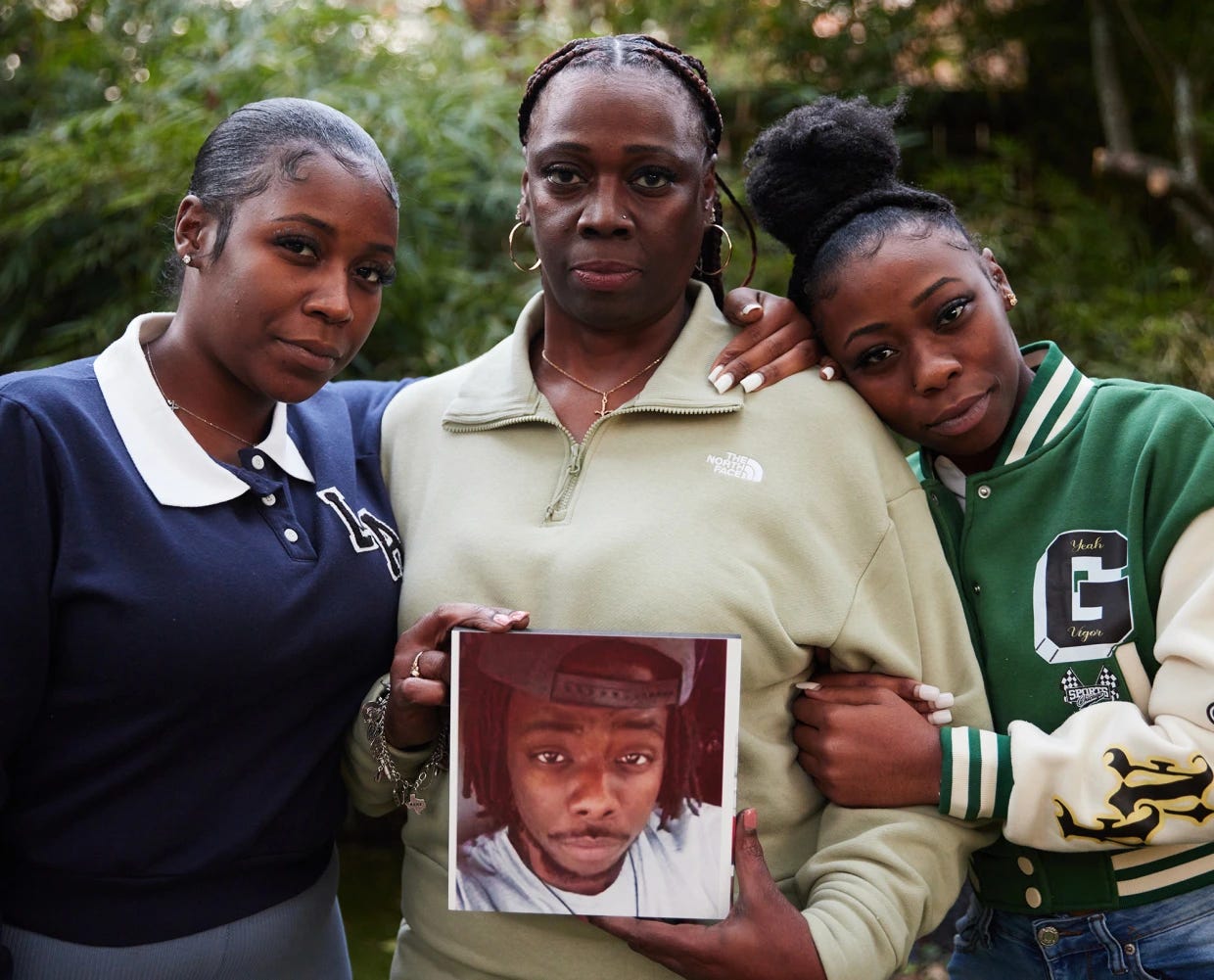Supreme Court to Reevaluate Police Use of Force in High-Stakes Case
Justices to Hear Arguments on the "Moment of the Threat Doctrine," Which Could Impact Police Accountability Nationwide.
HOUSTON — A routine traffic stop on a Texas highway escalated within seconds, leaving 24-year-old Ashtian Barnes fatally shot in the driver’s seat of his car. Now, nearly eight years later, the Supreme Court is set to hear arguments on Wednesday in a case that could reshape legal standards for assessing police use of force.
The case centers on whether courts should only consider the precise moment an officer uses force or if they should take into account the events leading up to it. For Barnes’ mother, Janice Hughes, 55, the case represents the latest step in her prolonged fight for justice.
“I need people to understand that my son was a victim from the very beginning,” Hughes said in an emotional interview at her lawyer’s home in Houston, flanked by her daughters and granddaughter.
Nearly five years after the death of George Floyd and the subsequent nationwide protests against police brutality, Hughes remains unconvinced that meaningful change has occurred.
“I feel like we just keep rallying, saying ‘Black Lives Matter,’ but nothing really changes,” she said. “Nobody’s holding the police accountable.”
Hughes’ civil rights lawsuit was dismissed by lower courts, which ruled that no excessive force had been used—applying a precedent that evaluates police conduct based only on the moment force was deployed. Her legal team is now asking the Supreme Court to reject this "moment of the threat doctrine" in favor of a broader assessment that considers an officer’s actions leading up to the fatal use of force.
Dissecting a Fatal Encounter
The incident occurred on April 28, 2016, when Barnes was pulled over on the Sam Houston Tollway in west Houston. The rented Toyota Corolla he was driving had outstanding toll violations, prompting Harris County Precinct 5 Constable’s Office traffic enforcement officer Roberto Felix Jr. to initiate the stop.
Barnes, unable to immediately produce his license or insurance, mentioned that the documents might be in the trunk. Felix later claimed he smelled marijuana, though no drugs were found in the car. During their exchange, Barnes turned off the engine and removed the key from the ignition.
The encounter, captured on Felix’s patrol car video, escalated rapidly. When Felix asked Barnes to exit the vehicle, Barnes suddenly restarted the engine and shifted into drive. Felix stepped onto the car’s door sill, shouted for Barnes to stop, and fired two shots, striking Barnes in the torso. The car came to an abrupt halt, and Barnes died at the scene.
The Houston Police Department and the Harris County District Attorney’s Office investigated the case, but a grand jury declined to bring charges against Felix. He remains employed by the constable’s office, and officials maintain his actions were justified.
Felix’s legal team has declined to comment publicly, but in his deposition, he stated he believed Barnes was acting suspiciously and that his decision to fire was based on fear for his safety.
National Implications for Policing
At the heart of the Supreme Court case is whether the legal assessment of excessive force should consider only the exact moment of the shooting or also the officer’s actions leading up to it.
Judge Patrick Higginbotham of the 5th U.S. Circuit Court of Appeals reluctantly ruled in favor of Felix, stating that he was bound by existing precedent but urging the Supreme Court to reconsider the doctrine.
“Given the rapid sequence of events and Officer Felix’s role in escalating the situation, a broader examination suggests a constitutional violation,” Higginbotham wrote.
Legal experts note that the outcome could have significant ramifications. Currently, four federal appellate courts embrace the “moment of the threat doctrine,” while eight others reject it. A Supreme Court ruling in favor of Hughes could set a new national standard, making it easier to challenge excessive force cases in court. A ruling favoring Felix, however, could make it even harder to hold officers accountable.
Felix’s attorneys argue that their client acted in accordance with the Supreme Court’s 1989 ruling in Graham v. Connor, which established that courts must assess police force from the perspective of a “reasonable officer” in the moment, rather than in hindsight.
The Role of Qualified Immunity
Even if Hughes prevails, Felix could still be shielded under qualified immunity—a legal doctrine that often protects officers from lawsuits unless a court has previously ruled a similar act unconstitutional. Courts would then need to determine whether it was “clearly established” in 2016 that Felix’s conduct violated the Constitution.
Hughes’ legal team hopes that, at a minimum, the case will result in clearer guidelines for policing and eliminate a precedent that makes it difficult to challenge police misconduct in court.
Clark Neily, a legal expert at the Cato Institute, noted that a win for Hughes would be both “symbolic and material,” as it would remove a significant barrier to lawsuits against officers accused of excessive force.
The Biden administration has filed a brief partly backing Hughes, arguing that courts should not ignore prior officer conduct but that the moment force is used should still hold “primary significance.”
A Mother’s Long Pursuit of Justice
For Hughes, the Supreme Court taking up her case was a bittersweet moment—an acknowledgment of her son’s story but also a reminder of her loss.
Sitting at her attorney’s dining table, she gently pressed a button on a stuffed bear wearing a Houston Rockets jersey. It played a recording of Barnes teaching his sister how to dance—a voice Hughes has held onto for years.
“That’s what I have left,” she said through tears. “It’s been eight long years, and we’re still trying to live, but we carry this with us every day.”
The Supreme Court is expected to issue a ruling by the end of June, with both Hughes and Felix expected to attend the oral arguments.


